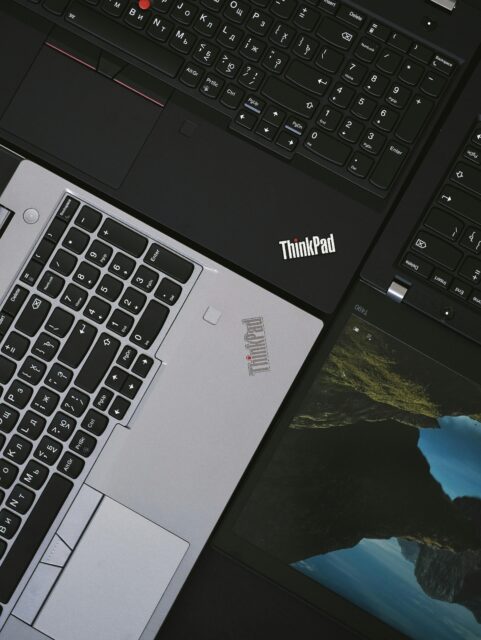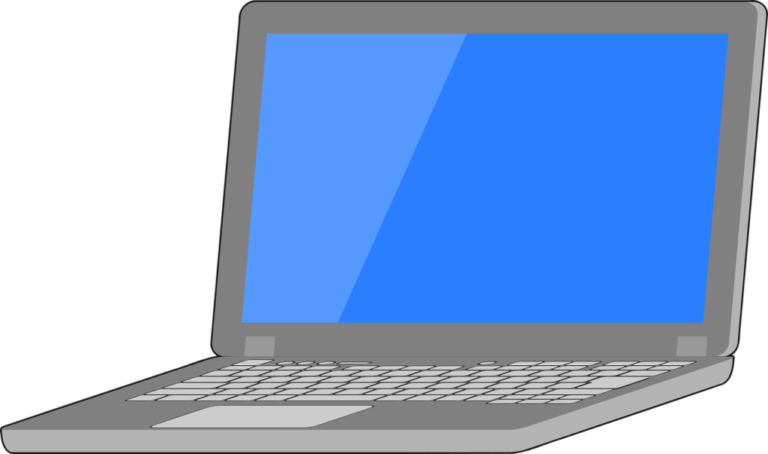Being a programmer is a great adventure; however, to become a great programmer, you need a specific type of notebook; one that is outfitted with processing power and hardware that is not commonly seen in a normal laptop for daily use.
A good starting point for anyone looking for a programming notebook is a Core i5 CPU, 8GB of RAM, a respectable integrated graphics card, and an SSD. These specs are just the basics; however, the higher the specification, the smoother your programming journey.
To help you choose the best notebook suitable for your programming journey, we’ve produced a list of our best notebooks for programming 2019.
Notebook for Programming 2019
1. Apple MacBook Pro 15-inch

This is an important addition to the list for programmers who prefer AMD GPUs. The 15-inch Apple MacBook Pro has a Radeon Pro 560 GPU, a 2.9-GHz Intel Core i7 processor and 16GB of RAM, making it an ideal programming workhorse.
That 16GB of RAM is beneficial for running many heavy programs simultaneously without experiencing latency or freezing. Additionally, the 15-inch MacBook Pro has amazing speakers.
This MacBook Pro also has an 11-hour battery life. It is worth mentioning, however, that if you drive this machine to its limits for a lengthy amount of time, sections such as the keyboard can become quite hot to the touch.
Key specs: CPU: 2.9-GHz quad-core Intel Core i7 | RAM: 16GB | Storage: 512GB | GPU: AMD Radeon Pro 560 | Display:15.4 inches (2800 x 1800) | Weight: 4 pounds
2. Dell XPS 13

Any programmer looking for a sharp, vivid, and (nearly) bezel-free screen for coding projects should take a look at Dell’s XPS 13, which has a particularly appealing display.
This machine is one of the slimmest on the list, which makes it ideal for working on the go, especially given its long battery life.
When you consider the machine’s 8GB of RAM and Core i7 CPU, it’s evident that the XPS 13 is more than just a pretty face; it also packs a good amount of technology. However, it lacks USB Type-A ports, so be aware of this.
KeySpecs: CPU: 1.8-GHz Intel Core i7-8550U | RAM: 8GB | Storage: 256GB | GPU: Intel UHD Graphics 620 | Display:13.3 inches (1920 x 1080) | Weight: 2.7 pounds
3. HP EliteBook 840 G5
The HP EliteBook 840 G5 is a solid all-rounder, sporting a respectable 8-and-a-half-hour battery life, a Core i7 CPU, 16GB of RAM, 512GB of storage, quality audio, and a well-designed keyboard.
As with other laptops on the list, the 16GB of RAM is an especially valuable trait, as it allows the EliteBook to juggle a lot of heavy-hitting processes at once without crippling performance. Additionally, the machine has an HDMI port. Key specss: CPU: 1.9-GHz Intel Core i7-8650U | RAM: 16GB | Storage: 512GB SSD | GPU: Intel UHD Graphics 620 | Display: 14 inches (1920×1080) | Weight: 3.4 pounds
4. Lenovo ThinkPad X1 Carbon

Few laptops on this list can match the Lenovo ThinkPad X1 Carbon in terms of capabilities. Based on a market survey, this laptop has it all: a gorgeous HDR display, 11 hours of battery life, a best-in-class keyboard, and a lightweight, attractive design.
Not to mention, the Carbon has 16GB of RAM and 512GB of storage. For individuals who want to look beautiful while working hard, this is the portable, powerful, and premium programming notebook to choose.
However, the music from its speakers is pretty tinny, so if you like what you see with the Carbon, you may want to get a set of headphones ahead of time. Key specss: CPU: 1.6-GHz Intel Core i5-8250U | RAM: 16GB | Storage: 512GB SSD | GPU: Intel UHD Graphics 620 | Display:14 inches (1920 x 1080) | Weight: 2.5 pounds
5. Microsoft Surface Pro
Microsoft’s Surface Pro is an excellent choice for programmers looking for a laptop with a touch screen and the necessary coding power.
With a Core i7 CPU, 16GB of RAM, and a massive 1TB of storage, this laptop is ideal for programmers who like to store a lot of files. It also weighs only 1.7 pounds, making it ideal for travel. However, the Surface Pro’s battery life is somewhat disappointing, lasting only 7-and-a-half hours.
Keyspecs: CPU: 2.5-GHz Intel Core i7-7660U | RAM: 16GB | Storage: 1TB SSD | GPU: Intel Iris Plus Graphics 640 | Display:12.3 inches (2736 x 1824) | Weight: 1.7 pounds
6. Samsung Notebook 9 Pro
This notebook is ideal for programmers who love touch screens and AMD GPUs. Despite having only 256GB of storage, it has 16GB of RAM, a Core i7 CPU, and a wide selection of connectors, making it suitable for most programming applications.
The only big negatives are the copious amounts of software and the battery life, which is only 7 hours.
Keyspecs: CPU:2.7-GHz Intel Core i7-7500U | RAM: 16GB | Storage: 256GB SSD | GPU: AMD Radeon 540 Graphics with 2GB of VRAM / Intel HD Graphics 620 | Display: 15 inches (1920 x 1080) | Weight: 3.8 pounds
What to Look For in a Programming Laptop
Choosing a notebook for programming might be a difficult procedure. Sure, you’re typing lines of colorful code on the screen, but having a notebook with the correct features and specs can make every coding session a lot easier.
While they may not apply to everyone, they provide a solid overview, so you can be confident you’re obtaining the finest laptop for the money.
Let’s dive right in.
1. Display
The display is undoubtedly one of the most significant aspects of any laptop. When you’re programming applications, you’ll be staring at the screen for a long time every day.
Being able to see the details clearly is critical. Choosing a laptop with at least a Full HD display is normally advised so that you can easily see each line of code from the beginning to the end of your coding.
2. Processing Power (CPU)
The CPU inside your laptop can have a significant impact on its performance. Choosing a laptop with a low-cost processor can impede your productivity.
There are numerous different types of processors with varying specs. The size, number of cores, thermal design power, and frequency are all important factors to consider.
Finding a laptop with an Intel CPU, such as an i5 or i7, with at least 3 GHz should suffice for your programming requirements.
3. Memory (RAM)
In general, you should avoid laptops with less than 4GB of RAM. Many experts recommend that you start with at least 8GB. With numerous apps that require huge quantities of RAM, selecting a laptop with insufficient RAM will only make it more difficult for you to develop.
If you can afford it, we recommend upgrading to a laptop with at least 16GB of RAM.
4. Storage Type and Capacity
Solid State Drives, sometimes known as SSDs, should be your first choice in a programming laptop. An SSD will significantly boost your laptop’s performance when compared to a traditional hard drive.
With an SSD, operations like booting up the operating system, running apps, loading projects and even generating code will be substantially faster. You should aim for 256GB as a starting point. Obviously, if you can afford it, an SSD with 512GB or 1TB is a better choice.
For those just starting out, a lesser capacity is OK because the operating system can coexist with your apps and frequently used documents. Other items, such as films and music, can simply be stored on an external hard drive.
5. Keyboard
Along with the display, the keyboard is the most crucial component of the laptop. Choosing a laptop with a low-quality keyboard will have an impact on your productivity.
Even if you insist, it won’t. Using a keyboard with which you are uncomfortable working on code all day will become boring and bothersome the longer you use it.
If possible, take any keyboard for a test drive. Try it out first to ensure that the keystrokes are comfortable and that you can easily access all of the options. If you anticipate working in low-light circumstances, a backlit keyboard can come in handy.
6. Battery Life
Nothing is worse than being out somewhere, working on a large project, and having your battery die. Not everyone wants to keep their laptop plugged in all day, especially if their job requires them to be present at the workplace all day.
A good laptop battery should last for at least six hours. I understand that many of you believe you can simply check the battery gauge on the screen; however, it is not always 100% accurate.
7. Operating System
For many, this will ultimately determine which laptop they purchase. While Windows users have a wide range of options, those who prefer macOS may be confined to what the MacBook offers.
Most Windows laptops can run Linux, although it is preferable to purchase a laptop that already supports it. Some manufacturers do sell high-quality laptops with Linux pre-installed.
As with battery life, doing the proper research will tell you whether your preferred Linux distributions will operate properly.
Conclusion
There are several factors to consider when purchasing a laptop for programming. While many of these can be related to the CPU, the amount of RAM or storage, or even the price, the most important factor to consider is your comfort level.
If you are not comfortable using your laptop for programming, it can negatively impact your productivity. It is critical to select one that meets your requirements and makes you feel at ease when using it.
We hope that our selection of the notebook for programming 2019 has helped you understand the possibilities available to you.
